News
Preliminary Interpretations of Settlement in Prehistoric Kosova: Results of the RAPID-K Survey (2018–2021)
Mike Galaty, Erina Baci, Zhani Gjyshja
Virtual FAST Lecture: January 27, 2022, 6:00-7:30 PM.
News from the field 2021
Read about the 2021 season in the UMMAA Newsletter (pages 12–15).
From the Field: by Gabby Armstrong
Working with RAPID-K has been one of the best experiences of my life. As this is my first time participating in an archaeological project, I have learned many field techniques including pedestrian survey, shovel testing, and the categorization and organization of artifacts in a lab setting. This portion of the 2019 UMMAA Summer Field School, while focused on archaeology in the Peja and Istog regions of Kosovo, is a full anthropological experience, especially pertaining to the cultural and linguistic aspects of this field of study.
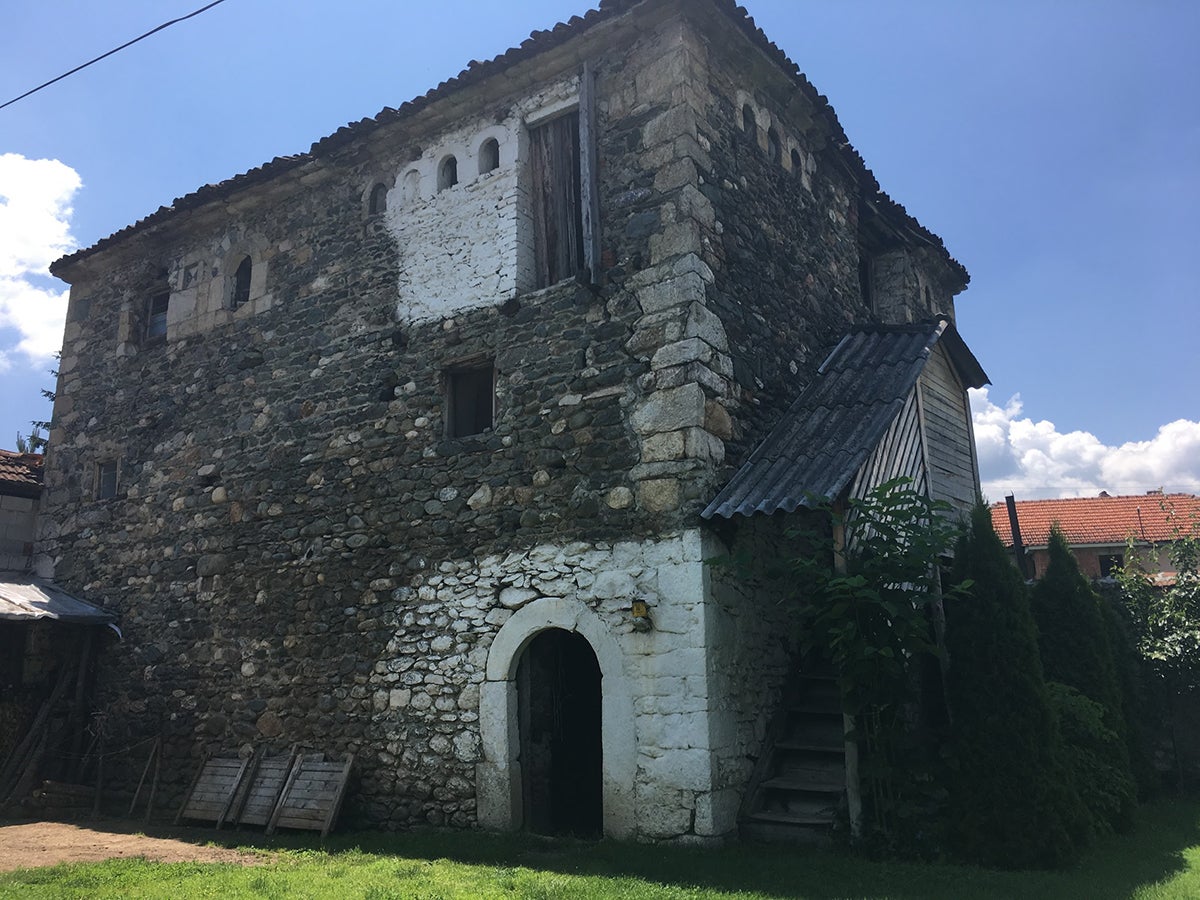
I have completed four days of pedestrian survey, two of which were in a small village filled with traditional architecture and unmatched hospitality. Never have I experienced such a sense of community and welcoming as I have in this village; my team was graciously welcomed into the homes of many Albanian families living in the village to enjoy Turkish coffee, cake, traditional desserts, and cold glasses of soda and water.
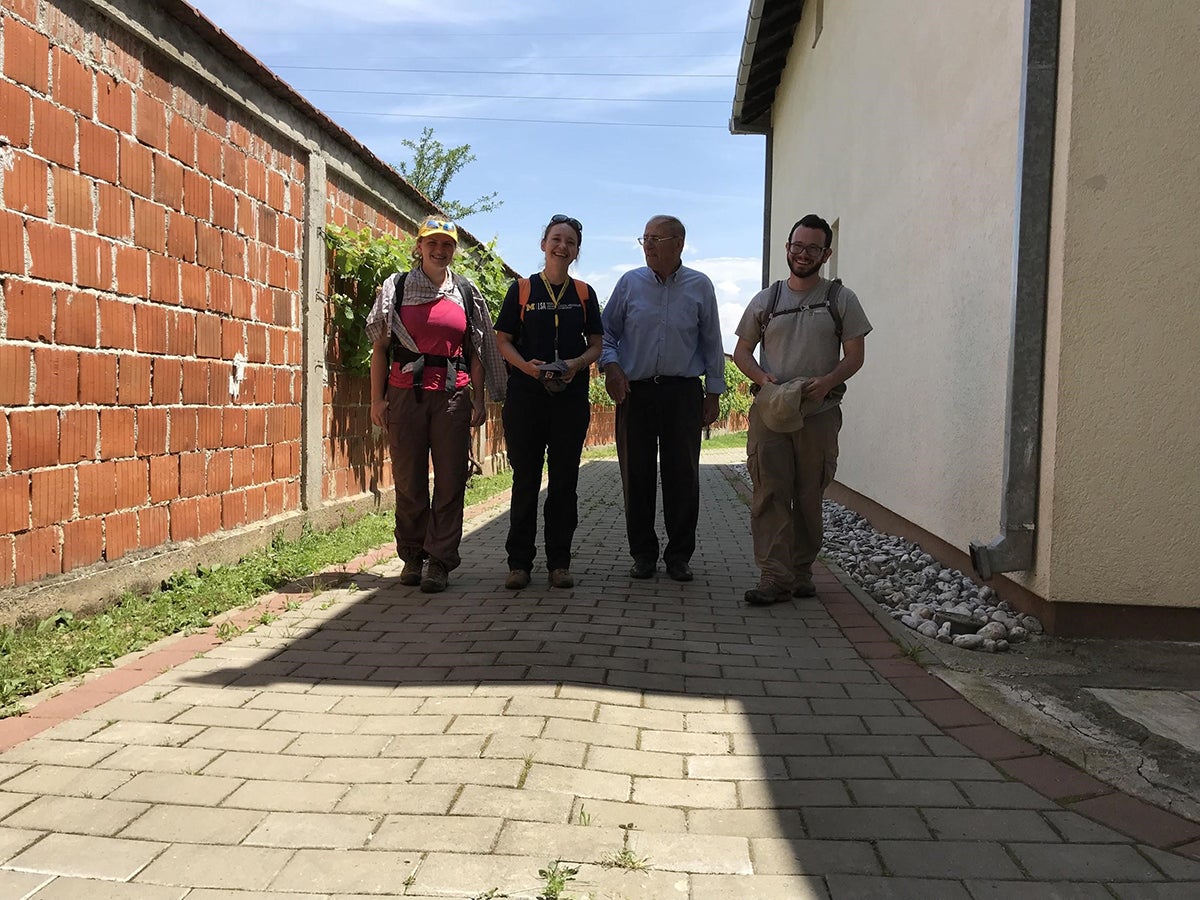
The people we met expanded our knowledge of the area and even helped us locate what we believe to be the largest tumulus, a burial mound, found in Kosovo. Archaeology requires collaboration and what better resource than the people who live and work on the land that we survey? Not only were they able to help us locate the tumulus and potential sites, but they were also able to provide me with an understanding of the culture of the region, one that I would not understand if I was just visiting on vacation. For me, it is important to use archaeology to learn about culture and also to use culture as guide for archaeology, and RAPID-K has confirmed this mentality. This project is extensive, using four pedestrian survey teams to cover a vast area, alongside a shovel testing team used to explore the extent of a site surveyed last year. The project has found artifacts from the Neolithic to modern times, identified what they believe to be a large Roman era site, and have located tumuli.
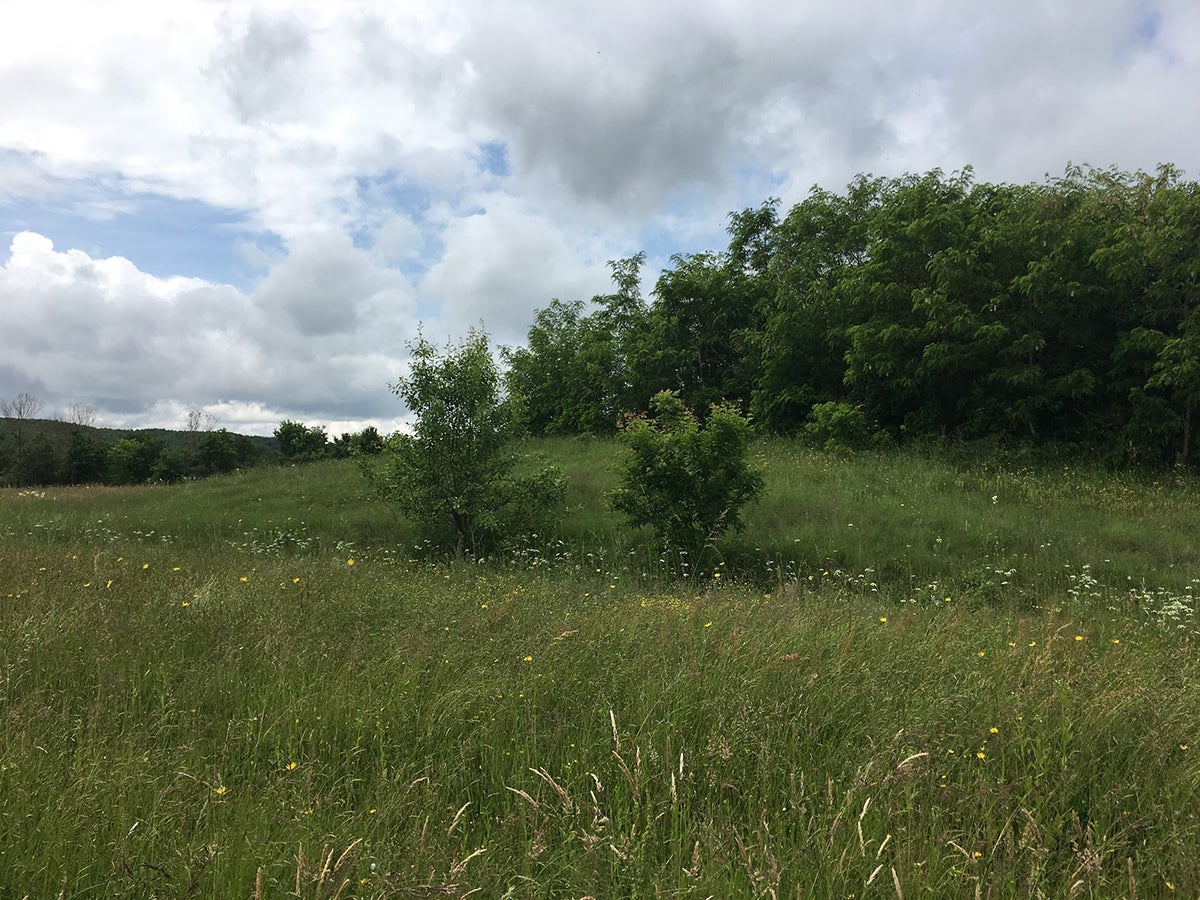
My favorite part of this project was my first day of pedestrian survey where my team found the tumulus. We documented its location and relative size before hiking up and exploring the top, where we believe there to be a looted grave. In the field next to the hypothesized tumulus, we found over 40 pieces of pottery from many different time periods, which lends credit to the belief that we found a tumulus. I am fortunate and thankful to have RAPID-K as my first field experience and cannot wait to see how the project advances in the coming field seasons.
From the Field: by Trevor McKinney
This post is about shovel testing! Previously I had been doing pedestrian survey, but recently I was able to get down in the dirt a little with shovels, trowels, and screens. The shovel test site isn’t all that far from where my team had been surveying tracts either, just a short drive outside Peja.
Shovel testing is another form of survey that involves digging in the ground and sifting through the dirt. Shovel test pits are uniform, smaller holes that are systematically dug to sample the distribution of artifacts. Details are carefully documented such as: any artifacts found, at what depth found, and total depth reached. This gives more information about what may be found if an area is excavated, and if this area is worth committing to excavating. The idea here is similar to pedestrian survey, but we get to look in the ground a bit.
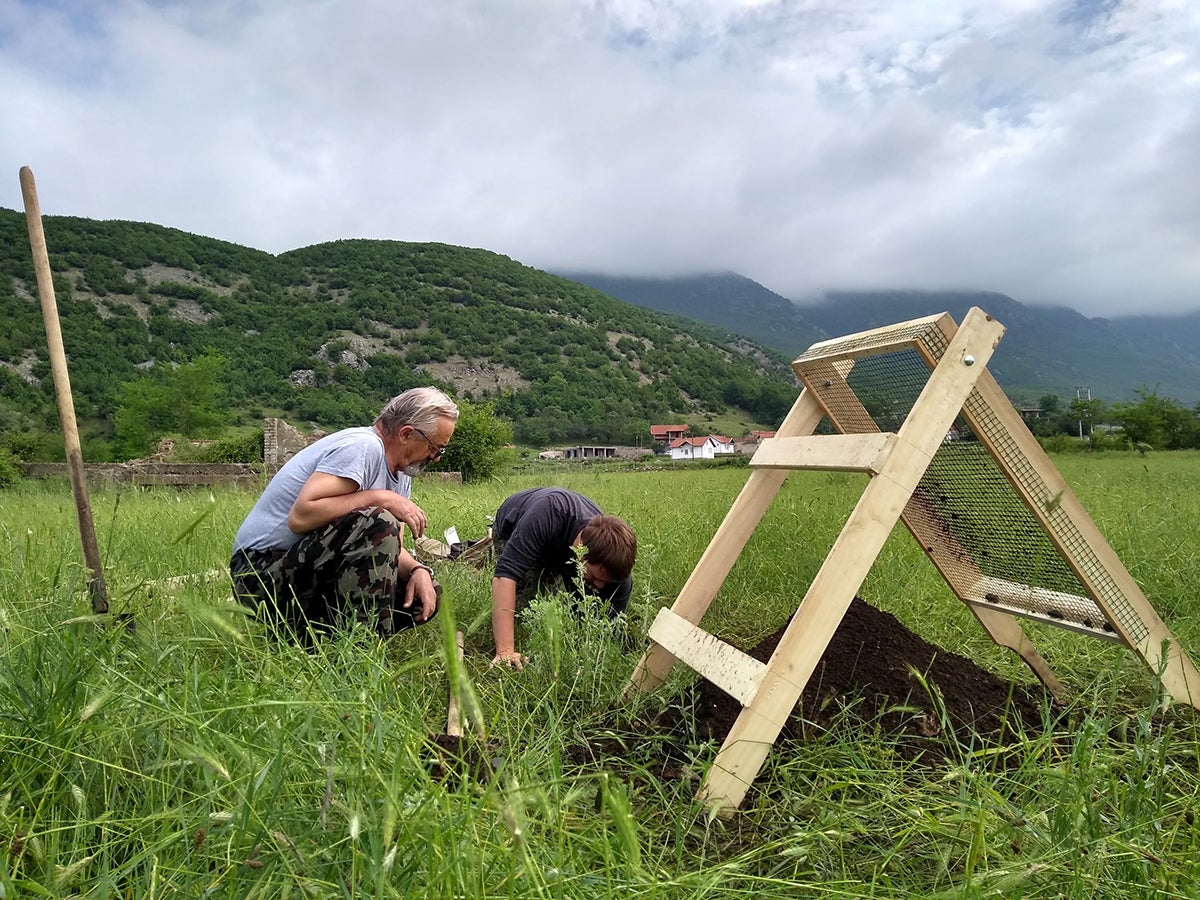
Our workflow consists mainly of one person digging the shovel test pit and one person sifting through the dirt using a screen to look for artifacts. We were looking to dig each down to a depth of 1m, but stopped short if a certain clay-soil layer was reached first. Digging these holes goes fast at first, but can get a bit difficult as you get deeper. The first 60cm can go much faster than the last 20cm when you really have to reach.
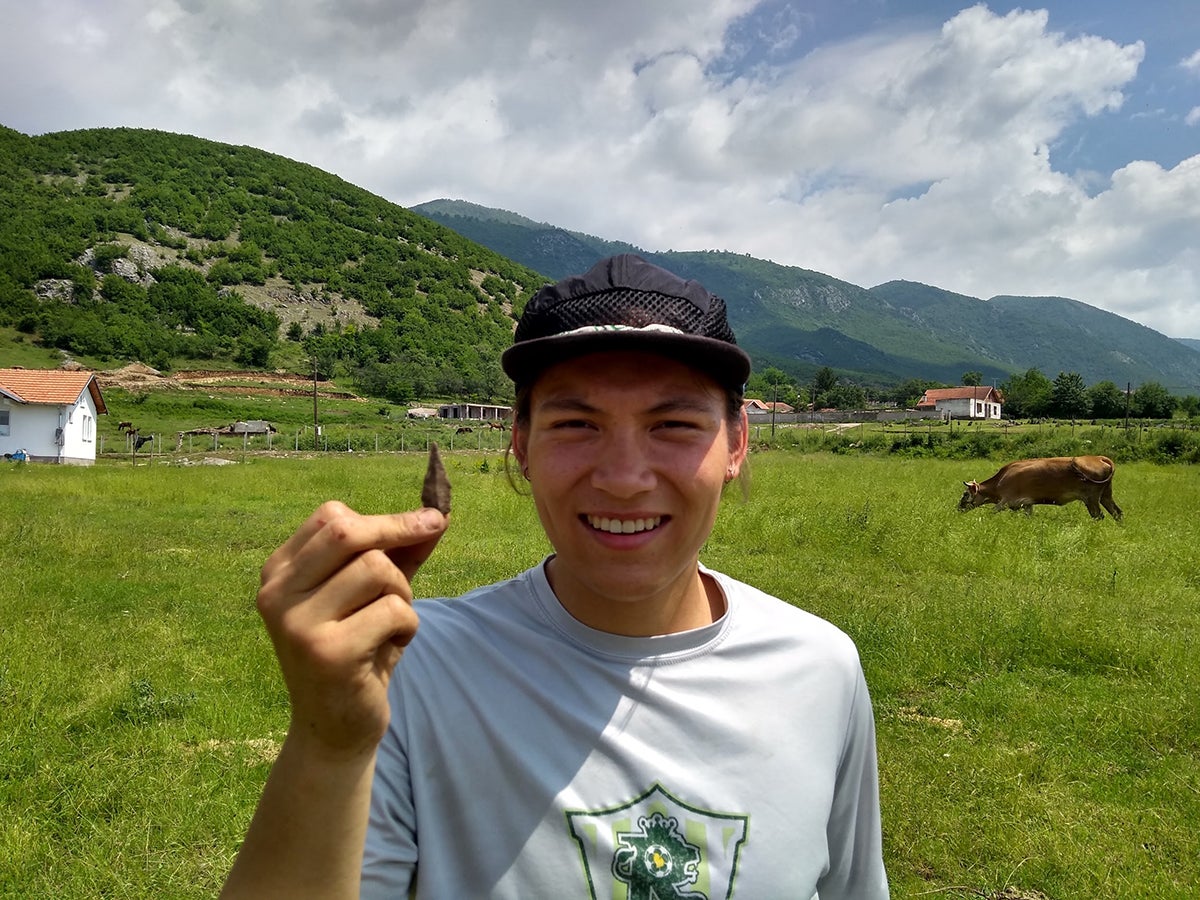
Most of the artifacts we find are ceramics, which can often be identified as Neolithic, Bronze Age, Medieval, or within only the past few hundred years. Age can be distinguished by different attributes such as how the pottery is made, its color, or any decoration. If the artifact is a distinguishable part of a ceramic piece, such as the base or handle, this can provide a lot more insight as to ceramic style. Some of the more exciting finds are lithic tools like the one I’m holding the picture. It appears to be some sort of arrow or spear point, and it was pretty cool to find.
Close to where we are shovel testing there’s a cemetery. It’s still used today, as there are modern grave markers. Interestingly, there are also stone cross grave markers that are indicative of a medieval cemetery. It showcases just how long people have been living in these areas and how we are finding artifacts that may span thousands of years, all laying in centimeters of soil.
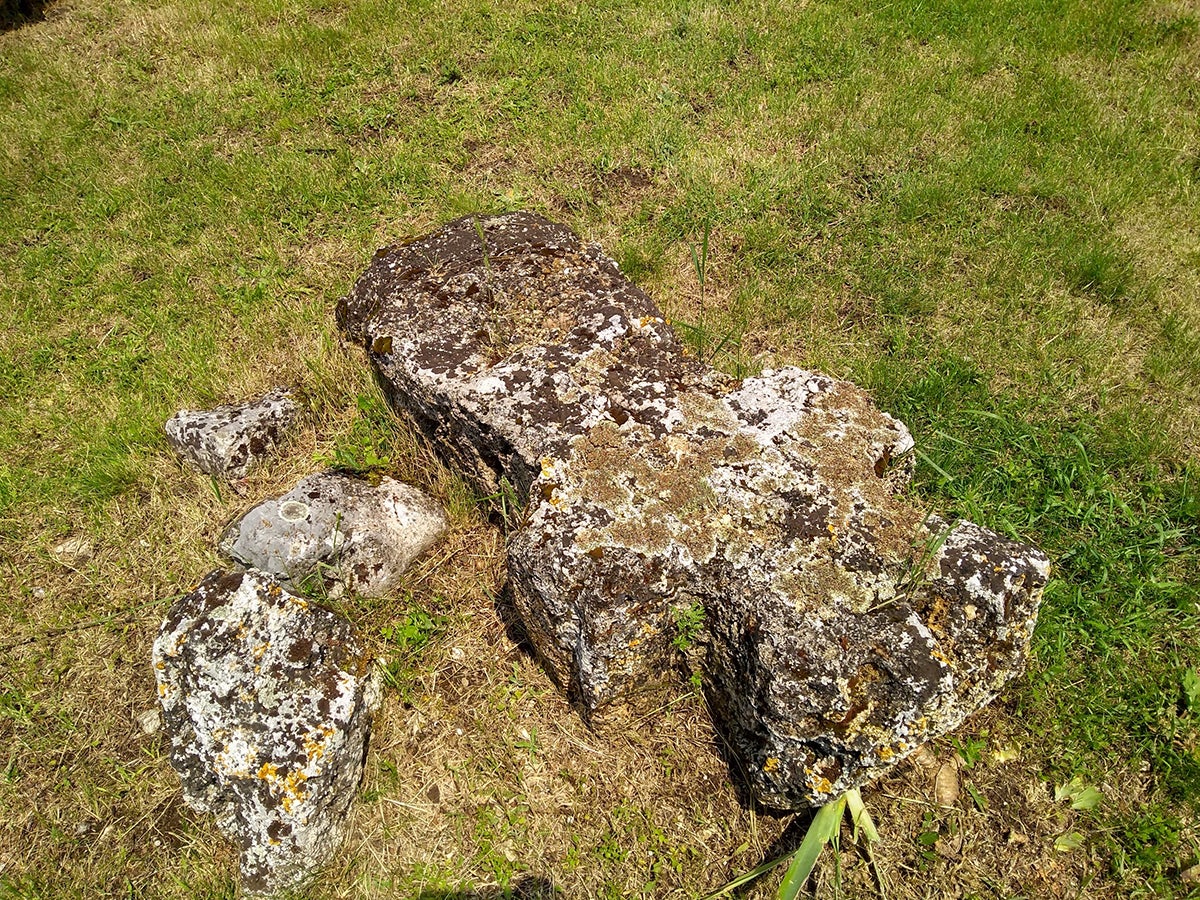
From the Field: by Roy Gebara
My time in Kosovo so far has truly been amazing and being in the field has allowed me a much greater appreciation of archaeology and Kosovar culture. Today was my second day out in the field surveying. I am on survey team D which is led by Sylvia, with Julian and Fatjon. Today we decided to survey a newer area with many fields that had not been surveyed before. However, as we quickly realized, surveying was going to be especially difficult today. The heat was intense, and the terrain was not easy to cross. The area was mountainous and often filled with tall grass. We talked to a few farmers in the area and they told us that they had never seen any pottery or ceramic in the area. We proved those farmers right very quickly as we went many fields without finding a single piece of pottery.
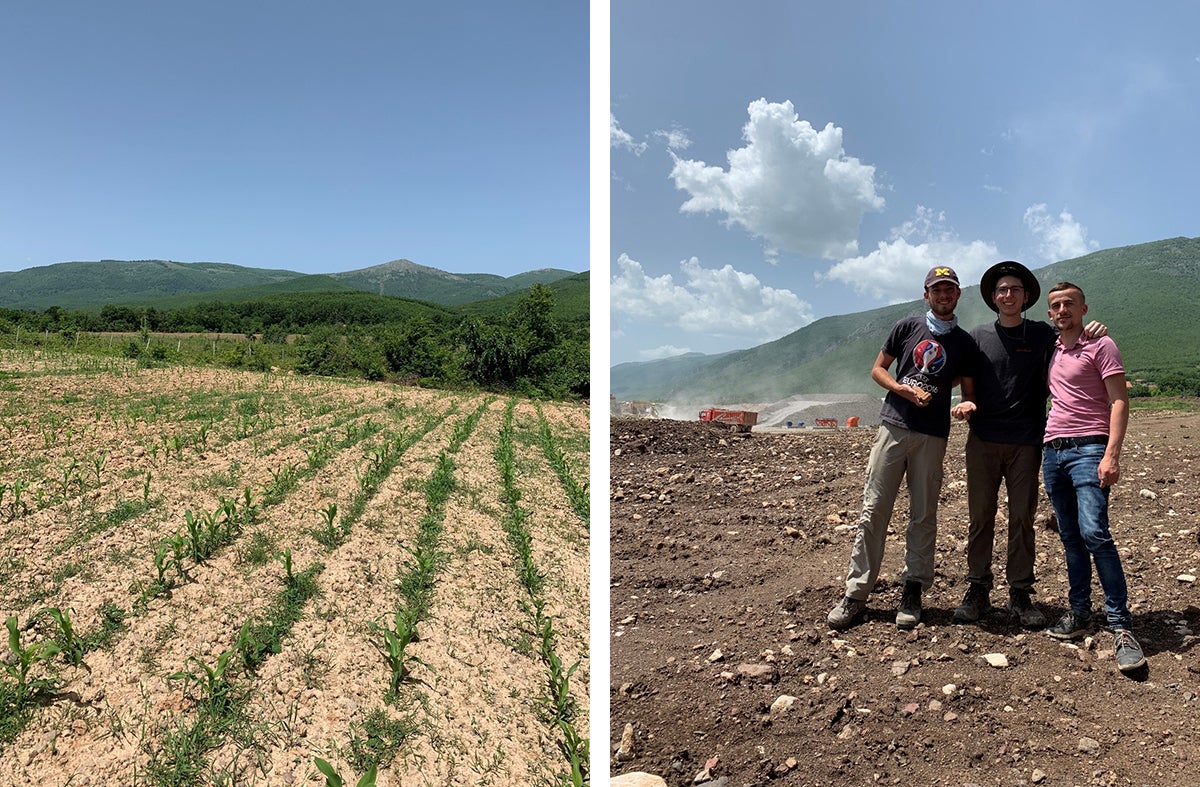
After not finding anything we jumped in the transporter and Sylvia took us to a new area. Much of this land was open and had much better visibility. This was promising, but yet again, we were not able to find much pottery. In this new area we only found four or five pieces of pottery. We were able to determine that they were most likely Medieval pottery. A few of the pieces were plain, which may indicate that they were used for practical purposes, possibly cooking, while others were highly decorated which may mean that they were valued for their visual aesthetic. In this new area, we ran into a local man whom the group had met a few days before. He invited us in for Turkish coffee, juice, and sweets. This incredible hospitality is very common in Kosovo. The people here have great love for guests and have a deep appreciation for their history and culture. Although I have only been here for a little over a week, I can undoubtedly say that Kosovo is a very special place. The man was incredibly kind and opened up to us about his life. We learned that he had just recently married and is planning on starting a family very soon. He also just bought a new puppy which the group immediately fell in love with. Perhaps most importantly, he reflected about the war and shared how it has affected his family. While the war was twenty years ago, it still has an incredibly significant effect on Kosovo today.
After coffee, we surveyed more fields where we found sparse amounts of pottery. We stopped for lunch, where a woman allowed us to use the shade of her front yard to rest. As we were eating, she graciously brought us cold water and raki for us to enjoy. This again speaks to Kosovar culture and how incredibly hospitable the people here are. They love their history and always ask about what we find. After lunch, we went to a few more fields where we were not able to find anything significant. While at first this may seem demoralizing, sometimes we can learn just as much about what we do not find as what we do. With the very low concentration of artifacts found, we can infer that this area was probably not a site. It may not have had as much importance as other areas in the landscape, where we cannot come out of a single field without finding ten or more artifacts. Archeology is a very exhaustive process. We can go days without finding much or days with finding so many artifacts it becomes hard to take them all back. However only through this process we can work to piece together thousands of years of history.
From the Field: by Martin Anderson
This field school has thus far for me been a series of firsts. Not only is it my first time being involved in a formal archaeological survey project, but it is also my first experience with travel outside of the United States. I chose to pursue a career in archaeology out of an urge for exploration, and a fascination with experiencing cultures first hand that are different from my own. My experience in Kosovo has by all means fulfilled these interests for me. It is more than fair to say that I am absolutely enamored with this country. From the breathtaking geography, the sweet and amicable people, and the incredible food, Kosovo has made me feel far from home, yet completely comfortable and welcomed. Here I have eaten incredible baklava, hiked along the beautiful mountain trails, played cards with incredibly smart and wonderful graduate students, somewhat learned to (very poorly) speak Albanian, and made friends with many local people I would never have had the chance to meet otherwise. This has been a very memorable experience for me, and more than anything I wish we had more time to spend in this gorgeous country.
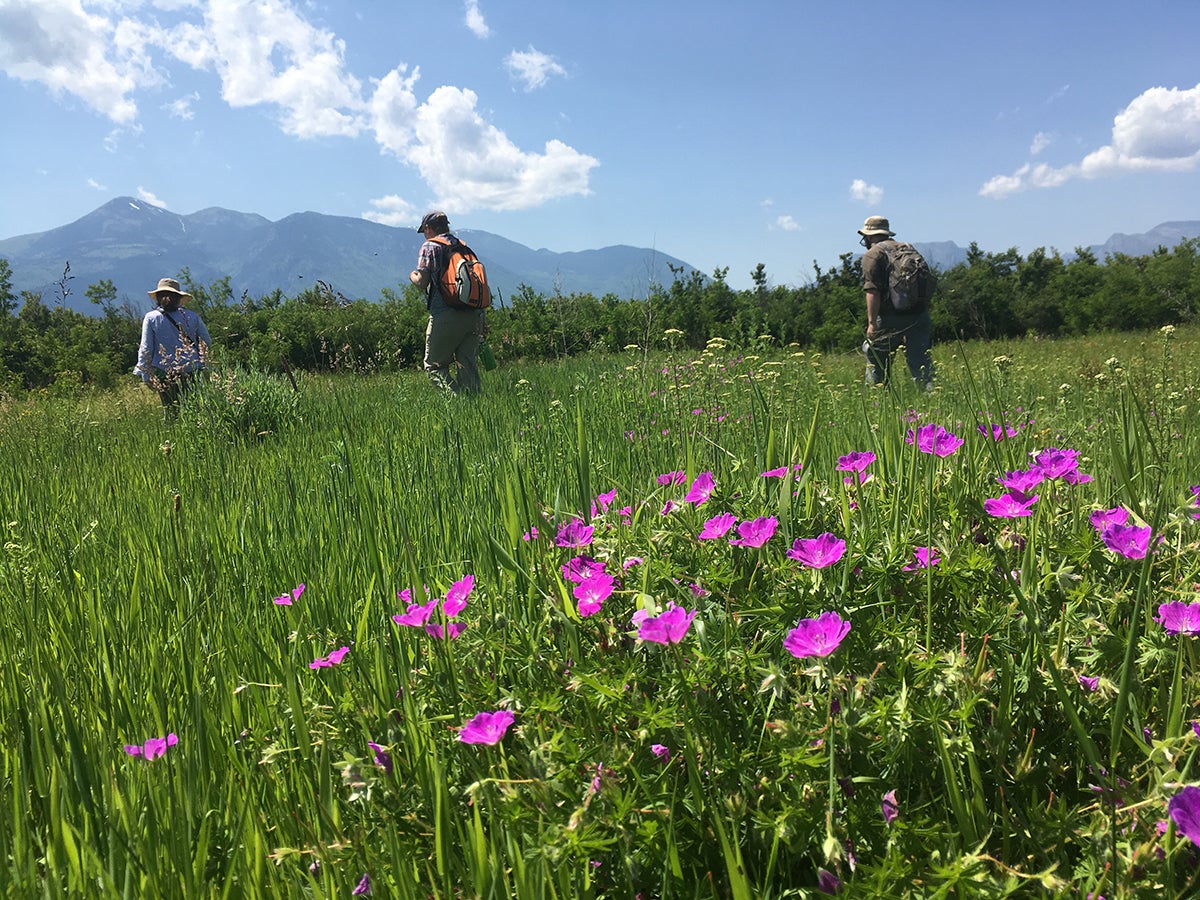
Besides the incredible cultural experience I’ve had during my short time here, I have also learned a great deal about archaeological practice, and garnered a wealth of knowledge, in Balkan archaeology specifically. I applied to this field school with the main goal of broadening my spectrum of possible roads to take for future research. There is an inconceivable amount of material that can be studied in archaeology, and as of now I am conflicted as to where exactly I would like to take my education and my career. I saw this field school as a way to experience a variety of different subjects and archaeological methods and thus to hopefully narrow my interests. Since my interests so far in the field of archaeology mainly concerned North and Central American archaeology, I had little to no background knowledge in Balkan archaeology when starting this field school. I could barely tell an artifact from a rock, and had an incredibly hard time identifying and dating the pieces of pottery that the survey teams were finding. However, through work in the museum to identify and categorize types of ceramics, days of surveying for any and all artifacts, and an overwhelming amount of help from the graduate students and Dr. Galaty, I have learned and applied a massive amount of information in a very short time span. I am excited to take part in what the rest of the field school has to offer.
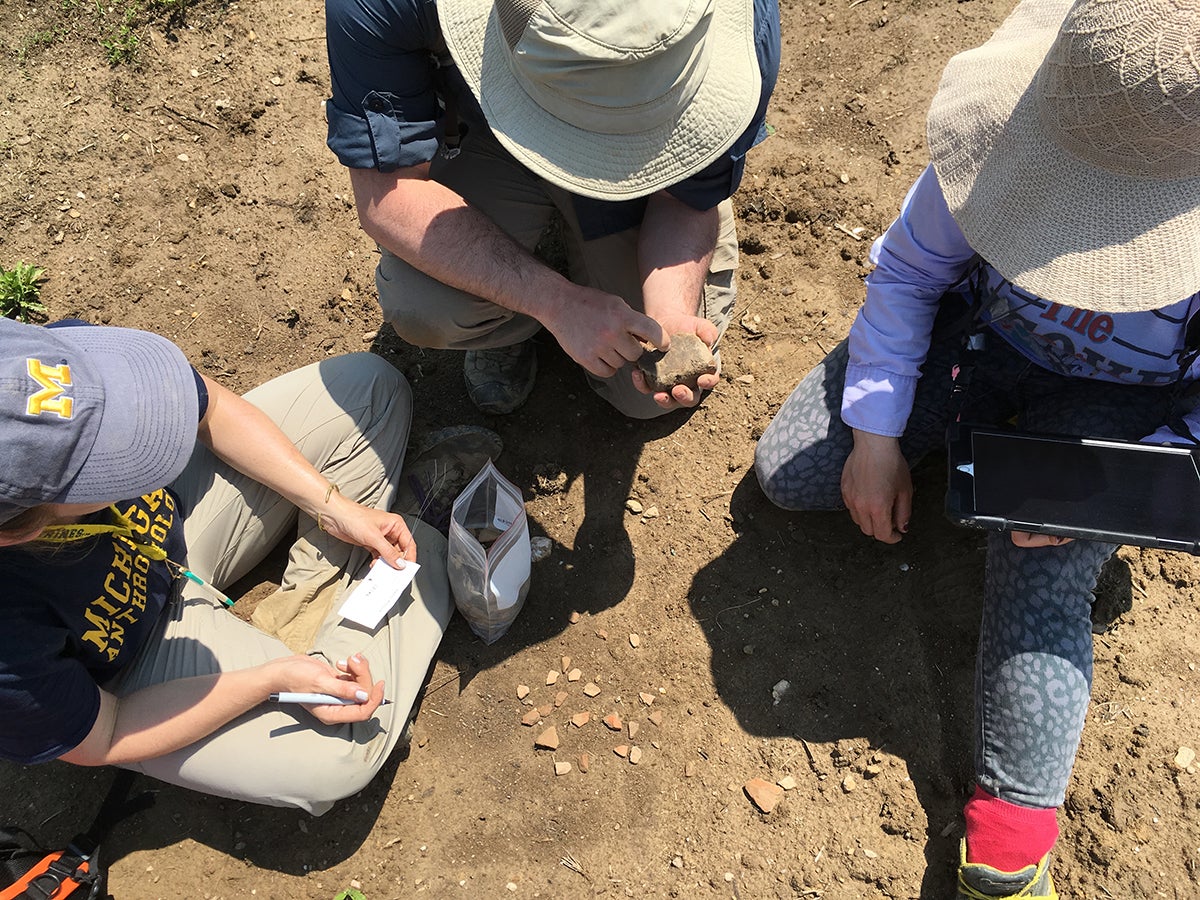
This field school has been a powerfully educational experience for me, but being in this beautiful country with such an amazing team of people and doing exactly what I love to do has made it hard for me to think of this as anything less than a exhilarating adventure.
From the Field: by Madeline Topor
I’ve spent a week here in Peja after arriving for the field school in Kosovo and I’ve been able to experience many different aspects of both archaeology and the culture. Being a part of this field school has already provided so many opportunities to learn about the region as well as field survey. On one of our first days here we drove through the mountains and went on a hike to explore the landscape of Kosovo. I also learned more about the history of religion in this area when we toured the Patriarchate of Peć. It was really interesting to see the architecture and elaborate design of this Orthodox Church. Throughout my time here we’ve visited many museums and places around the city, which helped me to be more involved with the culture and language.
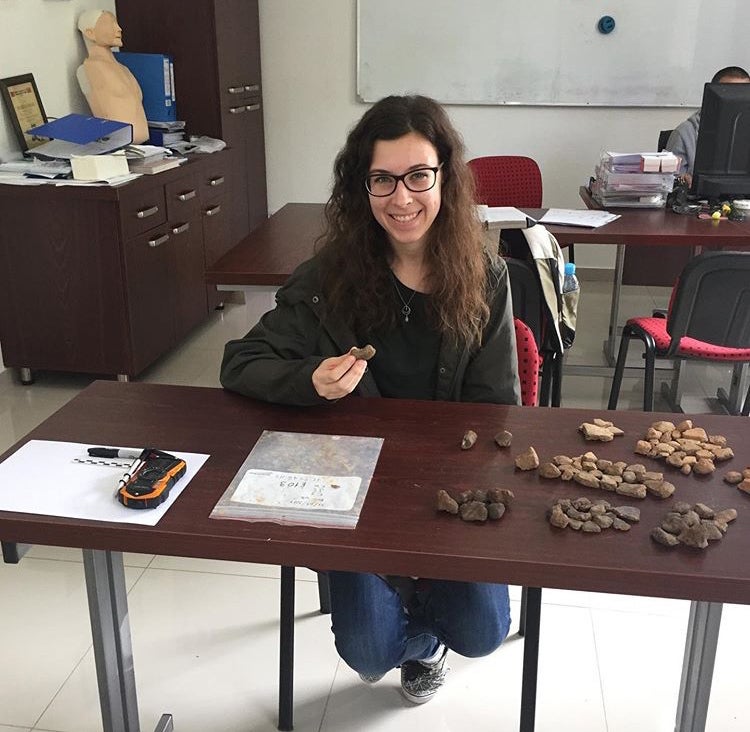
After spending a few days in Peja, it was time to begin working on the project. I’ve participated in all aspects of the project, such as digging shovel test pits, working in the museum, and field walking for survey. I learned a lot about archaeology from experiencing these different techniques. First I was doing shovel testing, where I got to help test whether the soil in an area contains artifacts that aren’t visible from the surface. It was really interesting to put the soil through a screen to see what objects are found in each layer of the pit. I also spent time working in the lab, which I really enjoyed because I got experience working with ceramics and I learned a lot about sorting them. I thought it was fun to work with sherds from a wide range of time periods, spanning from the Neolithic up to more modern times. Finally, I’ve been field walking with a survey team to look for surface objects in fields (or tracts) throughout the region. Walking in straight lines, each team member picks up any cultural material they see on the surface to collect information about the type, location, and distribution of artifacts over a large area. I think it’s exciting to go out into the field to see what objects and sites are still undiscovered. Overall, I’ve had a great experience with this field school and I’ve been able to learn a lot about archaeology and become involved with the culture here in Kosovo.
